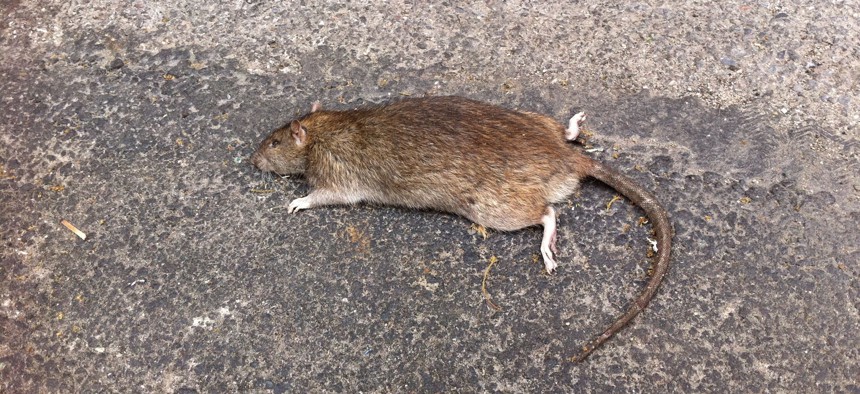A Cold Turn In Chicago’s Effort to Combat Rats

Flickr user Salim Virji via CC BY SA 2.0
The city looks to add dry ice to its rodent control arsenal.
The city of Chicago plans to deploy dry ice as a weapon in its ongoing battle against rats.
Mayor Rahm Emanuel and the Department of Streets and Sanitation announced the new rodent control measure Tuesday. To kill rats with dry ice, workers place a spoonful of it in a burrow and cover up the hole. As the ice melts, it turns to carbon dioxide and suffocates the rodents.
“Dry ice is an alternative that cities have been experimenting with and achieving tremendous success,” Department of Streets and Sanitation Commissioner Charles Williams said in a statement. “And we are excited to evaluate its effectiveness here in Chicago.”
Rodent control crews will initially use dry ice as part of a pilot program. Testing under the program is slated to continue into late fall, weather permitting, with a conclusion on the results expected in spring of 2017.
Boston, earlier this year, began experimenting with dry ice as a rodent control tool.
“It’s simple science,” William Christopher, commissioner of the city’s Inspectional Services Department said in April, according to the The Boston Globe. “It has not hurt anyone or any other wildlife or plant life. Based on everything we’ve seen so far, it’s been excellent.”
Confronted with a spike in complaints about rats in Chicago, Emanuel’s administration unveiled new measures in April targeting the rodents. These included 10 new two-person crews to go after the critters, and an interagency Rodent Task Force. The city has also used predictive analytics computer models to preemptively identify areas where rats could become a problem.
The city's usual method for exterminating rats has been rodenticide poisons.
People for the Ethical Treatment of Animals, or PETA, discourages the killing of rats and instead recommends eliminating food sources and other conditions that might attract the animals.
“Lethal methods never work to keep rodents away in the long run and will actually backfire,” the activist group notes on its website. “This is because when animals are killed or otherwise removed, the resultant spike in the food supply causes accelerated breeding among survivors and newcomers—and this means increased populations!”
The rat species Chicago is contending with is known as the Norway rat. Also called the brown rat, or sewer rat, the rodents prefer to live in underground burrows and are most active at night. They will eat nearly any food. Average-sized adults weigh about 1 pound.
PREVIOUSLY on Route Fifty:
Bill Lucia is a Reporter for Government Executive's Route Fifty and is based in Washington, D.C. (Photo by Salim Virji via CC BY SA 2.0)
NEXT STORY: A Simple, Potent Overhaul for 'Motor Voter'






